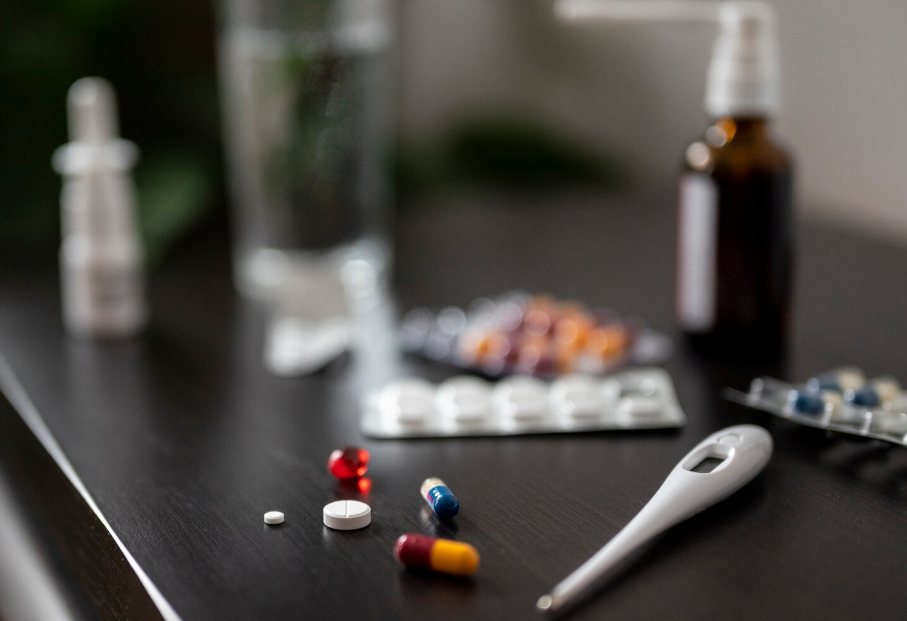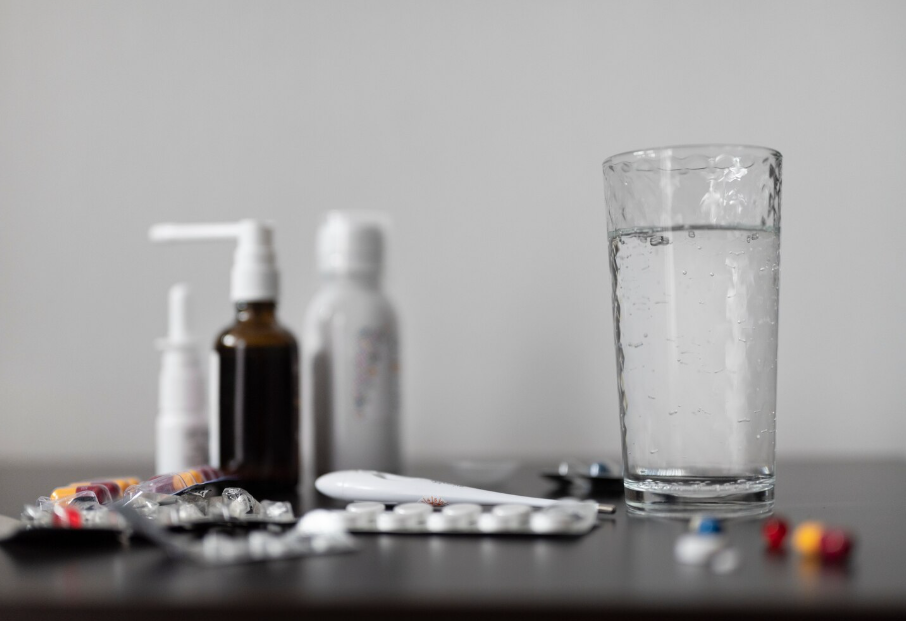Top 10 Average Age of Substance Abuse Statistics
- Heroin: The average age of first-time heroin users is 23 years old, according to the National Institute on Drug Abuse. However, there has been a significant increase in heroin use among young adults aged 18-25 in recent years.
- Cocaine: The average age of first-time cocaine users is 20 years old, according to the Substance Abuse and Mental Health Services Administration (SAMHSA).
- Prescription opioids: The average age of people who misuse prescription opioids is 26 years old, according to the Centers for Disease Control and Prevention (CDC).
- Marijuana: The average age of first-time marijuana users is 18 years old, according to SAMHSA. However, marijuana use is becoming more common among adults aged 26 and older.
- Methamphetamine: The average age of first-time methamphetamine users is 23 years old, according to the National Survey on Drug Use and Health.
- Alcohol: The average age of first-time alcohol use is 14 years old, according to SAMHSA. However, binge drinking is more common among young adults aged 18-25.
- Synthetic cannabinoids: The average age of people who use synthetic cannabinoids (also known as "spice" or "K2") is 21 years old, according to the National Institute on Drug Abuse.
- Inhalants: The average age of first-time inhalant use is 16 years old, according to the CDC.
- MDMA (Ecstasy): The average age of first-time MDMA use is 21 years old, according to SAMHSA.
- Steroids: The average age of people who use steroids for non-medical purposes is 25 years old, according to the National Institute on Drug Abuse.

Marijuana Use Among Students Statistics
- In 2019, 43% of high school seniors reported using marijuana at least once in their lifetime, while 22% reported using it within the past month.
- Among college students, 44% of full-time students reported using marijuana at least once in their lifetime, while 25% reported using it within the past month.
- Marijuana use is most common among college students aged 18-20, with nearly one-third reporting past-month use.

Countries with the Youngest Reported Ages of Drug Use Initiation
- Nigeria: 10.1% of drug users started using before the age of 15
- India: 7.8% of drug users started using before the age of 15
- Indonesia: 6.8% of drug users started using before the age of 15
- Pakistan: 6.6% of drug users started using before the age of 15
Countries with Older Reported Ages of Drug Use initiation
- Japan: less than 1% of drug users started using before the age of 15
- South Korea: less than 1% of drug users started using before the age of 15
- Australia: less than 2% of drug users started using before the age of 15
Adolescent Substance Abuse Facts
Adolescent substance abuse is a major public health concern, with long-term consequences for both physical and mental health. Here are some statistics related to adolescent substance abuse:
- In 2019, approximately 1 in 7 high school students reported using e-cigarettes in the past 30 days, according to the CDC.
- Alcohol use among high school students has decreased significantly over the past few decades, but it still remains a problem. In 2019, 29% of high school students reported drinking alcohol within the past month.
- Marijuana is the most commonly used illicit drug among adolescents. In 2019, approximately 35% of high school seniors reported using marijuana within the past year.
- Prescription drug misuse is also a concern among adolescents. In 2019, approximately 3% of high school seniors reported misusing prescription opioids within the past year.
- Adolescents who use substances are at higher risk for mental health problems such as depression and anxiety.
- Early substance use can also have an impact on brain development and lead to long-term cognitive deficits.
![NCDAS: Substance Abuse and Addiction Statistics [2023]](https://cdn.prod.website-files.com/64c196f6a5062cbed770a366/64c9e24a1fc29aec963950a5_illegal-drug-usership-among-college-students.png)
Drug Abuse Deaths Among Teenagers and Young Adults Worldwide
- In the United States, drug overdose is the leading cause of accidental death among young people aged 15-24, accounting for over 20% of all deaths in this age group.
- Globally, approximately 13% of all deaths among young people aged 10-24 are attributable to alcohol and drug use.
- In Europe, drug-related deaths among young people have been on the rise, with a 70% increase reported between 2000 and 2015.
- In Australia, overdose deaths involving opioids have increased significantly in recent years, with the highest rates observed among young adults aged 25-34.
- In Canada, overdose deaths involving fentanyl have been a major concern in recent years. Young adults aged 20-29 have been particularly affected by this trend.
- In India, approximately one-third of drug-related deaths occur among individuals aged 15-29.
-100.jpg)
How Many Young People Received Treatment?
- In 2019, approximately 1.4 million adolescents aged 12-17 received treatment for a substance use disorder, according to SAMHSA. This represents about 5.3% of all adolescents in this age group.
- Among young adults aged 18-25, approximately 2.3 million received treatment for a substance use disorder in 2019, representing about 10.5% of all young adults in this age group.
- Despite these numbers, many young people who need help do not receive it. In fact, only about 1 in 10 individuals with a substance use disorder receive any kind of specialty treatment.
Substance Abuse Statistics
- In 2019, approximately 20.4 million adults (aged 18 or older) had a substance use disorder in the past year, which represents about 7.8% of the U.S. population.
- Among people aged 12 or older who misused prescription pain relievers in the past year, 59.8% obtained the drugs from a friend or relative for free, according to the National Survey on Drug Use and Health.
- In 2019, an estimated 9.7 million people aged 12 or older misused prescription pain relievers.
- Alcohol misuse is common among young adults aged 18-25, with over 14 million adults in this age group reporting heavy alcohol use in the past month, according to the Substance Abuse and Mental Health Services Administration (SAMHSA).
- The economic cost of substance abuse in the United States was estimated to be $740 billion in 2019, according to a report by the National Institute on Drug Abuse (NIDA).
- Opioid addiction has become a public health crisis in the United States, with over 450,000 overdose deaths involving opioids reported between 1999 and 2018, according to the Centers for Disease Control and Prevention (CDC).
- In 2019, approximately 1 in 7 high school students reported using e-cigarettes within the past month.
- Approximately 35% of high school seniors reported using marijuana within the past year (2019 data).
- Over 2 million people aged 12 or older had a prescription opioid use disorder in 2018, according to NIDA.
- Among adults who had a substance use disorder in the past year (2019 data), only about 10% received treatment at a specialty facility, according to the Substance Abuse and Mental Health Services Administration.
- In 2019, approximately 3% of high school seniors reported misusing prescription opioids within the past year.
- Among adults who had a substance use disorder in the past year (2019 data), about 19% received any type of treatment.
- Approximately 44% of full-time college students reported using marijuana at least once in their lifetime, while 25% reported using it within the past month (2019 data).
- Heroin overdose deaths have increased significantly in recent years, with over 15,000 deaths reported in 2018, according to the CDC.
- Among people aged 12 or older who misused prescription pain relievers in the past year, about 16% got them from a doctor's prescription but used them differently than directed by their healthcare provider, according to SAMHSA.
- In 2019, approximately 29% of high school students reported drinking alcohol within the past month.
- According to NIDA, about 1 out of every 8 people who try cocaine become addicted to it.
- Synthetic opioids such as fentanyl are a growing concern in the United States, with over 36,500 overdose deaths involving synthetic opioids reported in 2019 alone (CDC data).
- Approximately 23% of high school seniors reported binge drinking (consuming five or more drinks on one occasion) within the past two weeks (data from 2019).
- In 2019, approximately 7 million people aged 12 or older had an illicit drug use disorder other than marijuana.
- According to SAMHSA data from 2018-19, about 5 million adults aged 18 or older misused tranquilizers such as Xanax or Valium in the past year.
- Among people who misused prescription pain relievers in the past year, about 6% reported using them intravenously (CDC data from 2019).
- In 2019, approximately 1 in 5 young adults aged 18-25 had a substance use disorder.
- According to SAMHSA data from 2018-19, about 2 million adults aged 18 or older misused stimulants such as Adderall or Ritalin in the past year.
- Over 1 million people aged 12 or older had a cocaine use disorder in the past year (data from 2018), according to NIDA.
- Among people aged 12 or older who used illicit drugs within the past month in 2019, approximately 3% used heroin (SAMHSA data).
- According to NIDA, about 90% of people who have a substance use disorder started using substances before the age of 18.
- In 2019, approximately 15% of high school students reported smoking cigarettes within the past month.
- Among adults who had a substance use disorder in the past year (2019 data), about 31% received treatment at a self-help group such as Alcoholics Anonymous.
- According to SAMHSA data from 2018-19, over 1 million adults aged 18 or older misused sedatives such as Ambien or Lunesta in the past year.
FAQs
What factors contribute to the average age of substance abuse?
There is no one factor that contributes to the average age of substance abuse. It varies depending on a number of factors such as cultural attitudes towards drug use, availability and accessibility of drugs, socioeconomic status, peer pressure, mental health issues, and more.
Are there any gender differences in the average age of substance abuse?
Yes, there are some gender differences in the average age of substance abuse. For example, males tend to start using drugs at an earlier age than females. Additionally, certain drugs may be more commonly used by one gender over another.
How can we prevent young people from starting to use drugs at a young age?
Prevention efforts can include education about the dangers of drug use, positive role models who demonstrate healthy behavior and decision making skills, increasing access to mental health resources for those struggling with underlying issues that may lead to drug use, and community-based programs that provide safe and supportive environments for young people to learn and grow.
Is it ever too late for someone to seek help for their substance use disorder?
No, it is never too late for someone to seek help for their substance use disorder. Recovery is possible at any stage of life with the right support and resources. Seeking help takes courage and strength, but it can lead to a happier and healthier future.
Conclusion
Substance abuse affects millions of people worldwide. It's a complex issue that can impact anyone, from teenagers to adults.
There are many different reasons why someone might turn to drugs or alcohol, and it's important for all of us to understand the risks involved. By working together, we can help prevent substance abuse and ensure that those who are struggling with addiction get the help they need.
References
https://www.ncbi.nlm.nih.gov/pmc/articles/PMC3711401/
https://sbtreatment.com/addiction-and-age-groups-guide/
https://landmarkrecovery.com/when-do-most-people-start-using-drugs/
https://jamanetwork.com/journals/jamapediatrics/fullarticle/2761302
https://www.addictioncenter.com/addiction/addiction-statistics/


-Cover-100.jpg)





.png)
.png)
.png)
.png)